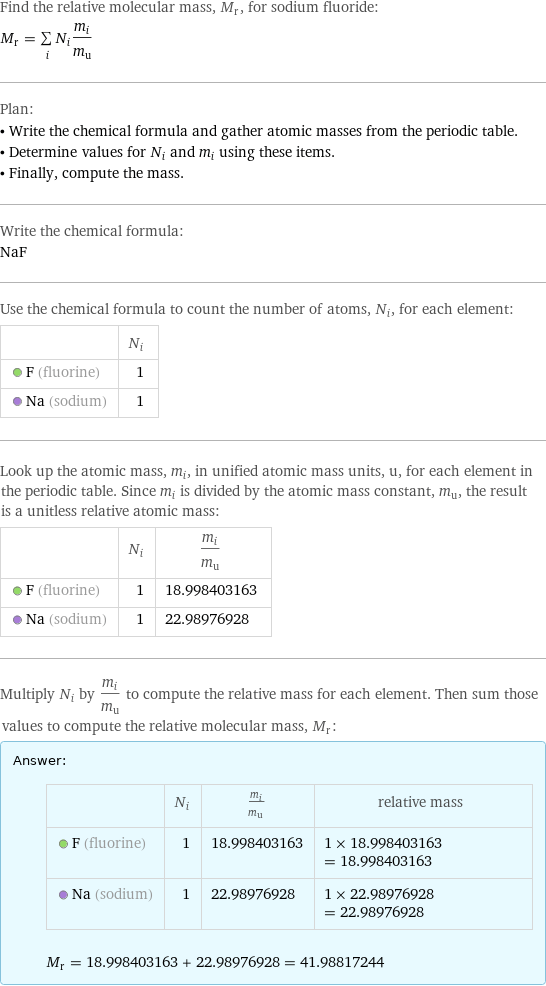Input interpretation

sodium fluoride | relative molecular mass
Result

Find the relative molecular mass, M_r, for sodium fluoride: M_r = sum _iN_im_i/m_u Plan: • Write the chemical formula and gather atomic masses from the periodic table. • Determine values for N_i and m_i using these items. • Finally, compute the mass. Write the chemical formula: NaF Use the chemical formula to count the number of atoms, N_i, for each element: | N_i F (fluorine) | 1 Na (sodium) | 1 Look up the atomic mass, m_i, in unified atomic mass units, u, for each element in the periodic table. Since m_i is divided by the atomic mass constant, m_u, the result is a unitless relative atomic mass: | N_i | m_i/m_u F (fluorine) | 1 | 18.998403163 Na (sodium) | 1 | 22.98976928 Multiply N_i by m_i/m_u to compute the relative mass for each element. Then sum those values to compute the relative molecular mass, M_r: Answer: | | | N_i | m_i/m_u | relative mass F (fluorine) | 1 | 18.998403163 | 1 × 18.998403163 = 18.998403163 Na (sodium) | 1 | 22.98976928 | 1 × 22.98976928 = 22.98976928 M_r = 18.998403163 + 22.98976928 = 41.98817244
Comparisons

≈ ( 0.058 ≈ 1/17 ) × relative molecular mass of fullerene ( ≈ 721 )

≈ ( 0.22 ≈ 1/5 ) × relative molecular mass of caffeine ( ≈ 194 )

≈ 0.72 × relative molecular mass of sodium chloride ( ≈ 58 )
Corresponding quantities

Molar mass M from M = M_uM_r: | 42 g/mol (grams per mole)

Molecular mass m from m = M_rM_u/N_A: | 7×10^-23 grams | 7×10^-26 kg (kilograms)